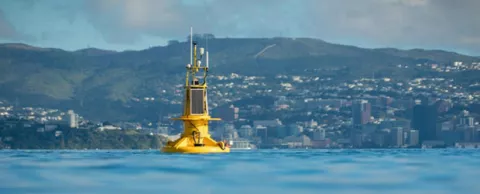
Photo credit: Stuart Mackay, NIWA
You can't manage what you can’t measure is a saying we have all used conveniently at some stage to demonstrate a point. But the Internet of Things has changed this, providing an unparalleled opportunity for us to measure virtually anything. And for the Greater Wellington Regional Council, this is exactly what they have done to help combat growing water quality concerns in the harbour, by using new water quality monitoring technology that collects and communicates near real-time data on environmental conditions.
Once a task that at best yielded weeks-old data, the Wellington Council is now experiencing the full benefits of 'real-time' from IoT, with additional capability to add additional sensors to the backbone infrastructure (the buoy) over time. It is applications of IoT within the natural environment like this that give us an insight into the potential hundreds, and thousands, of opportunities for better understanding our natural capital assets. — Adam Beck
That combination of technologies is referred to as WRIBO (Wellington Region Integrated Buoy Observations). And as one would guess from the name, it involves a buoy equipped with instruments that collect data on water quality, currents and many other characteristics that reflect the health of Wellington Harbour.
The solar-powered buoy is the result of a partnership between the National Institute of Water and Atmospheric Research (NIWA) and the Greater Wellington Regional Council (GWRC) to continuously monitor harbour health. One of its primary roles is to monitor the sediments and nutrients carried in Hutt River plumes that flow into the harbour.
And according to an article in Water and Wastewater International, it also collects and relays data on waves, oxygen and chlorophyll content, ocean acidification, wind, temperature and salinity. The buoy, which weighs 500 kg and is three metres in length, is tethered to the harbour floor. It was built by a NIWA mooring technician and incorporates remote environmental monitoring equipment from Canadian company AXYS Technologies.
Monitoring equipment also has been deployed near the harbour floor and at different depths to gauge the effects and extent of the sediments spread by waves and currents. More monitoring equipment will be added later.
NIWA coastal physicist Dr Joanne O'Callaghan, the project leader, explained how the data is relayed in real-time. "The buoy makes a phone call to a computer and sends back data of up-to-date conditions in the Harbour. This means we don't have to wait for good weather to collect the data which is never easy in Wellington."
The installation of WRIBO, which followed a successful trial in September, is the first step in what will be a continuous water quality monitoring programme for the harbour and surrounding coastal region.
Doug Peeples is a writer specializing in technology and energy. Follow @smartcitiesanz on Twitter.



